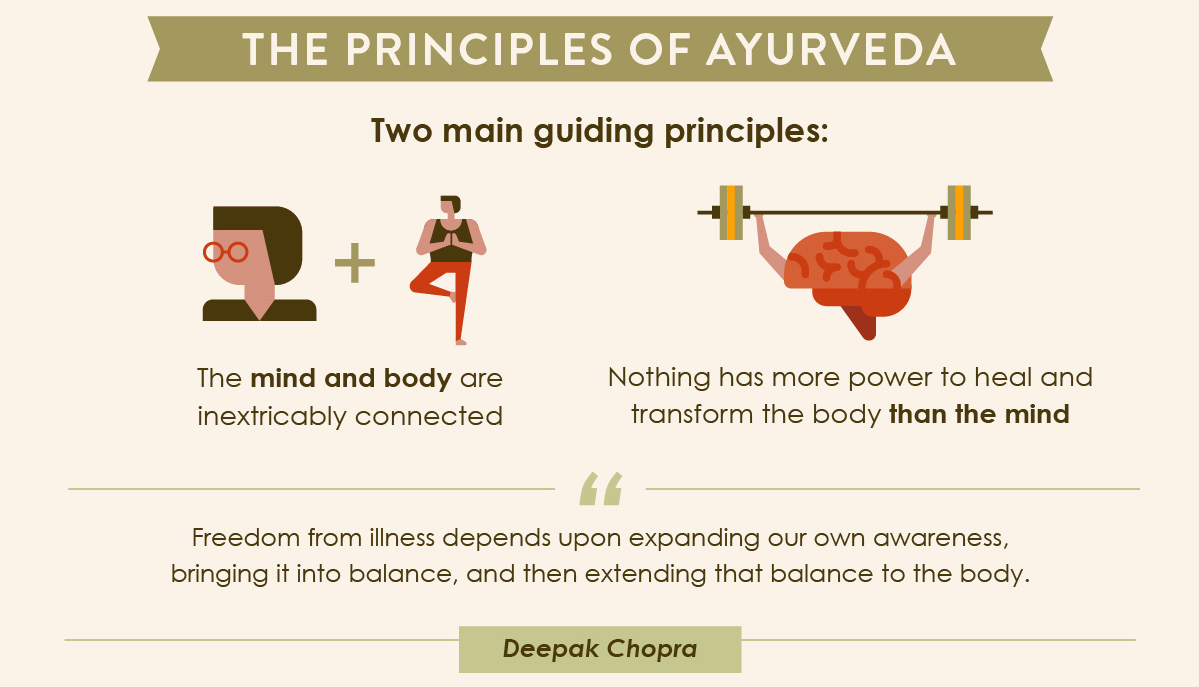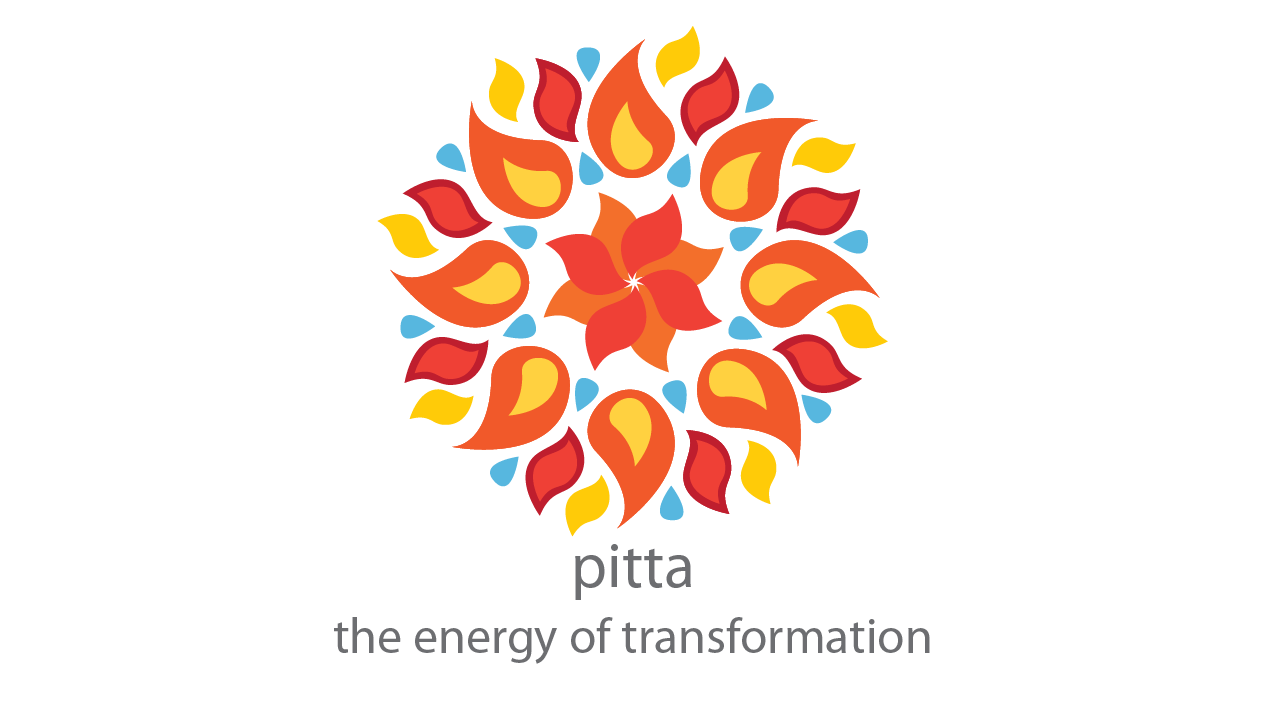
Ayurveda is one of the oldest whole-body healing systems of the world. It originated in India more than 3,000 years ago, but its principles and practices are not limited to the Indian subcontinent. In Sanskrit, Ayurveda refers to the ‘science of life’, often called the ‘mother of all healing’. The system hails from the ancient Vedic culture of India, where it was passed on as an oral tradition from accomplished masters to their followers or disciples.
Ayurveda works on the belief that an individual’s health and wellness depend on a balance between the mind, body, and soul. Its primary goal is not to fight disease, rather promote good health. However, today ayurvedic treatments are geared towards solving specific health problems.
What is Ayurveda?

Ayurveda is popularly perceived as the science of longevity, also known as ‘sacred knowledge of life.’
It is a holistic (whole-body) healing tradition and way of living that inspires each of us to live a life full of wellness. It helps us establish a link with our truest inner nature, develop inner strength, reduce detrimental tendencies, work on our challenges, and maintain a balance in the face of every trouble or adversity.
Ayurveda is not simply about taking some herbs and going through treatments, rather it encourages us to find our inner strengths. It involves identifying the unique elements that make up every human body, called doshas (that we will discuss below) and creating a desirable balance of these doshas in our body.

According to Ayurveda, health or svastha is a bodily state in which the mind, soul, and the senses interact harmoniously for developing a feeling of self and wellness.
There are some key principles through which Ayurvedic practitioners see the universe. These principles are important to interpret the law of nature, identify states of health, and chart a course towards improved well-being.
These fundamental principles are based upon the five elements of a human body, per Ayurveda. These are:
- Earth
- Water
- Fire
- Air
- Ether
All individuals contain these five elements in a unique proportion. However, there’s always a constituent that dominates the overall structure of a human body. Ayurveda also identifies a set of twenty qualities or gunas that describes every individual. We can study them in ten pairs of opposites, given below:
| Heavy | Light
|
| Slow | Sharp |
| Smooth | Rough |
| Cold | Hot |
| Oily | Dry |
| Soft | Hard |
| Dense | Liquid |
| Stable | Mobile |
| Cloudy | Clear
|
| Gross | Subtle |
These gunas are integral in understanding Ayurvedic principles and using each of them to balance the opposite quality. Like cold by hot.
Your body and its principal constituents – Ayurvedic Doshas

Based on the five elements of Ayurveda, there are three bodily humors or doshas – Vata, pitta, and Kapha.
The proportion of these three constituents determines the differences among all things. Every individual communicates with these five elements via food, air, and water. These elements are metabolized with the help of Agni. The elements which we take inside our body are known as Dhatus, while the excretory waste is called the Mala.
Every individual is born with a unique combination of these constituents. It also defines a state of balance or vikriti which identifies the doshas that are elevated in a body at any given time. Accumulation of doshas beyond healthy limits leads to health issues and illness.
Let’s look at the characteristics of each Ayurvedic body type:
Vata Dosha:

Many Ayurvedic practitioners consider vata as the most powerful of all three doshas. Vata constitutes the energy of Air and ether. It controls basic body functions like cell division, mind, breathing, heart function, and intestinal waste. It also affects our capacity to experience joy, flexibility, and expansive consciousness. The vata qualities include dry, cold, light, rough, clear, subtle, and mobile.
People with vata as the primary dosha tends to develop conditions like asthma, anxiety, skin problems, heart disease, etc. when imbalanced.
Pitta Dosha:

Pitta dosha is the combination of fire and water. It controls your digestion, metabolism, and body hormones linked to appetite. The pitta qualities include hot, sharp, light, liquid, spreading, and oily. Things that can cause imbalance include eating spicy or sour foods and spending too much time in the sun. When imbalanced, it can lead to conditions like Crohn’s disease, high blood pressure, heart disease, and infections.
Kapha Dosha:

Kapha dosha is the combination of water and earth. It is responsible for body structure and cohesiveness, stability, and grounding. It controls nourishment, lubrication, growth, strength, fluid balance, memory and body’s ability to feel contentment and compassion. The qualities of Kapha include heavy, slow, cool, oily, smooth, dense, soft, stable, cloudy, gross, etc. An imbalance can lead to cancer, diabetes, nausea, obesity, and asthma.
By knowing your Ayurvedic constitution and current state of balance, Ayurvedic practitioners can suggest a suitable treatment for overall well-being. On a personal level too, you can adjust to various activities of your life like exercise, food habits, etc.
Benefits of Ayurvedic Treatment

Ayurveda adds a holistic approach to life. Ayurveda along with its sister science Yoga can benefit you in various ways:
- You are encouraged to love yourself.
- It offers a complete approach to follow a healthy lifestyle.
- You get a better understanding of your life and how you channel your inner energies.
- Its benefits penetrate beyond your skin, to your mind, body muscles, and soul.
- It helps on a cellular level by helping regenerate cells.
- It can help you get rid of body toxins or ama for better digestion.
- Better sync between mind, body, and soul leads to reduced stress and a greater sense of well-being.
- It supports your adrenals and helps generate natural sources of energy.
- It helps you in getting luscious hair, smooth skin, and ageless beauty.
- It helps in regulating your sleep cycle to reduce the harmful effects caused by a lack of sleep.
Ayurveda is best for you and anyone who wants to experience total well-being. With strong fundamentals that have been tried and tested for years, you can bring true transformation to your life.











